Marketing. Advertising. Sales.
Three big words.
I’ll go out on a limb and say that those three words have delighted, worried, and even confused the vast majority of entrepreneurs at some point, myself included.
And they’re not wrong.
After all, you can have the best product in the world, but if nobody knows about it, then how can you expect to sell it?
And, honestly, marketing and advertising are tough.
Another truth bomb: you’re probably not going to make a sale with your first ad or marketing campaign.
But that’s totally okay – because you’ll get something even more valuable instead.
In this article I’ll explain why it can be so tough to make a sale with your first advertisement, how you can improve your chances at succeeding, and what you can get which is more valuable than a sale.



Setting Your Expectations

Before we get started, I want to talk about how important it is to set expectations about what you want to achieve, not only with your first ad or marketing campaign, but with your business in general.
→ Click Here to Launch Your Online Business with Shopify
As entrepreneurs, we’re all chasing success.
And success means totally different things to different people.
For some, just making a sale is the most important thing. For others, their sights are set on bigger targets.
That’s why it’s important that you establish what you want to achieve before you get started with your marketing campaigns.
Write down your goal for your first campaign. Then, write down your goal for your tenth campaign. After that, write down where you want to be with your business after six months.
Entrepreneurship is an ongoing challenge, and while you might not succeed with your first couple of marketing campaigns, you’ll certainly learn valuable insights that will help you to succeed later on down the line.
After all, you probably didn’t build your business just to succeed with one campaign. You probably started to build a brand for the long-term.
And once you’ve got your goals for the future written down in front of you, it’s much easier to tell if you’re moving in the right direction.
Okay, now that we’ve covered the importance of goal setting, it’s time to get into the nitty-gritty of why it can be so tough to make a sale with your first marketing efforts.
You Need to Understand Your Marketing Channels

When you’re running a business it’s imperative that you have an understanding of the marketing channels that you use to promote your business.
Not just how to set up a marketing campaign, or how to come up with a creative, but also how your potential customers interact with marketing campaigns on that platform in general.
Let’s use Facebook advertising as an example.
Traffic from Facebook, which is a social media channel first and foremost, is likely going to have little initial motivation to shop.
Think about it – when was the last time you logged on to Facebook with the aim of buying some shoes or a new hat?
Probably never.
And that’s the why Facebook is good and bad for marketing.
Facebook is fantastic because their advertising platform offers you in-depth targeting options which will allow you to communicate directly with an audience that, at the very least, show interest in your niche.
Here’s a look below at Facebook’s Audience Insights tool. You’ll see some inputs from our side on the left (for a niche audience) and some insights about that audience in the middle of the screen.
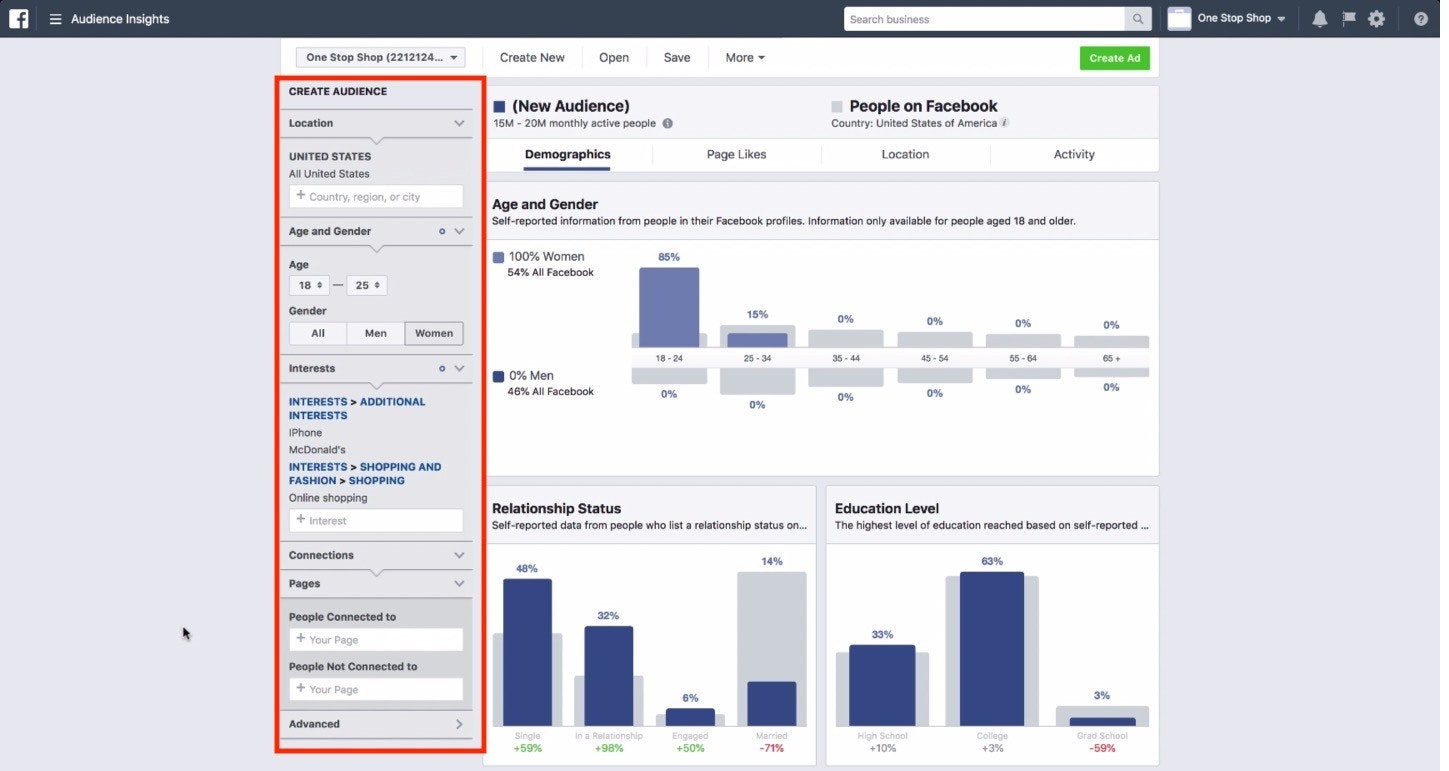
And if you can manage to use this data to put a product in front of your audience which catches their eye, or offer something truly valuable to them, then you’ve got a chance to convert them.
But, you’re competing for attention from your audience with their updates from their family, friends, and cute dog videos, so you can’t really expect 100% of people to click on your ad.
In fact, studies have shown that the average click-through rates for Facebook ads for retail businesses sit around 1.59%. That’s relatively high too – the average click-through rate across all industries is 0.90%.
That means that for every 100 people who you put your ad in front of, you can expect around one or two people to click.
Not a lot, huh?
Plus, factor in that you’re going to be targeting an untested audience of shoppers with your first ad, and it becomes clearer why it can be so tough to secure a sale with your first ad.
Our best advice? Install the Facebook Pixel on your website, set up a broad target audience, and learn as much as possible – you can refine your campaigns later.
You need to keep testing, and you need to keep trying, because that will give you something even more valuable than sales.
With this newfound data you’ll learn:
- More about your audience. I bet you want to know which type of people engage with your products the most.
- More about your marketing campaigns. You’ll probably want to know which messages resonate most with different target groups.
- More about your landing pages. I guess you want to know which pages convert best too.
It’s like they say, knowledge really is power.
BONUS: Check out how one entrepreneur sold sunglasses using Facebook ads and made $8,873 in 31 days.
You Need to Understand Which Products to Promote

Choosing which products to promote, and which pages you’re going to land your potential customers on, is so important.
And you’re going to find much more success in this process if you make data-driven decisions.
But how do you get that data?
Yep, you guessed it – running tests.
How else are you going to decide whether it’s better if your visitor lands on specific product pages, or on carefully curated collection pages after they’ve clicked on an ad?
I recommend starting off by choosing three different products from your store which you believe your audience will love. If you’re using Facebook, you can turn a normal ad campaign into an A/B test with a single click:
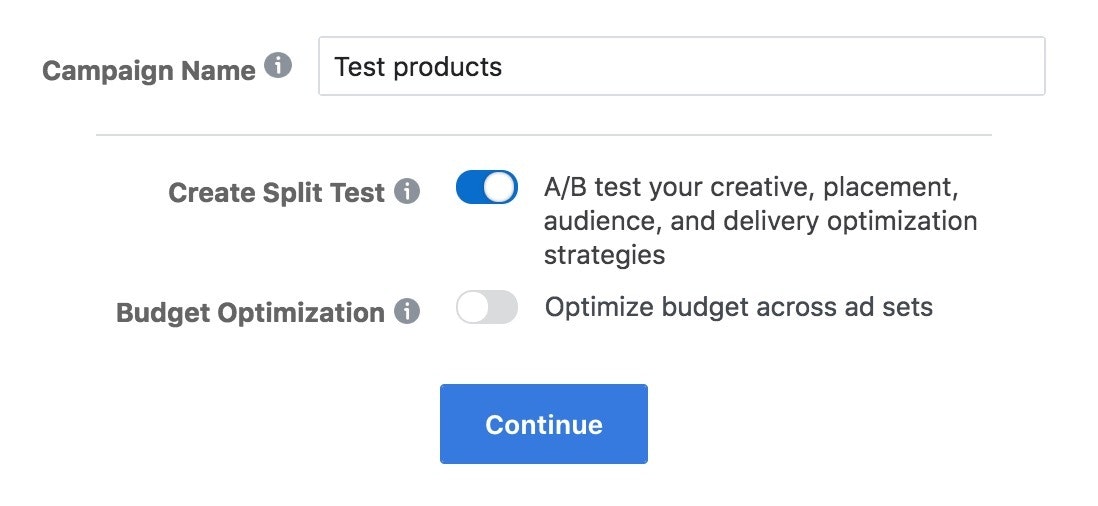
Make sure that all three campaigns are similar – except for the one thing that you want to test. This is what it might look like if you want to test which image generates more engagement:
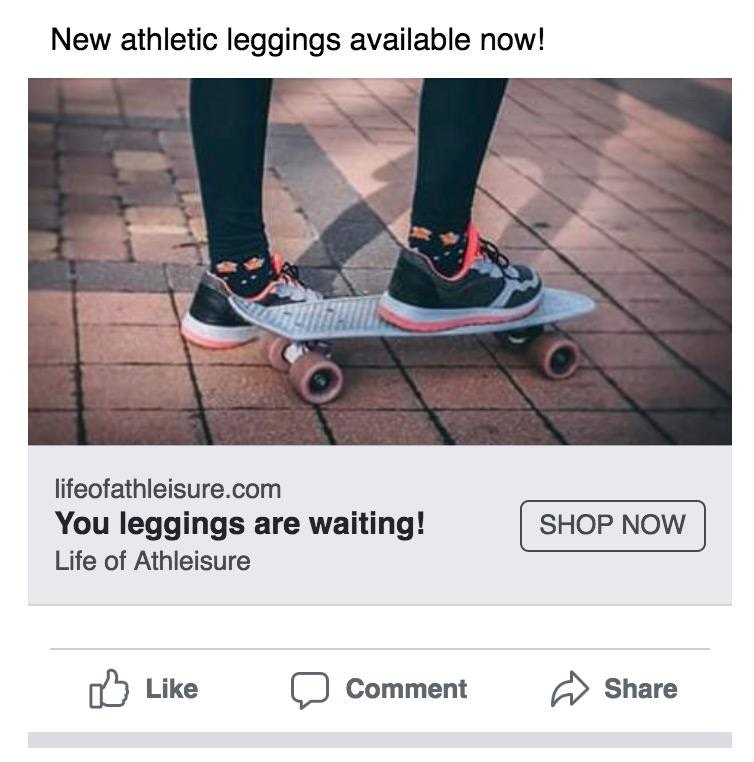
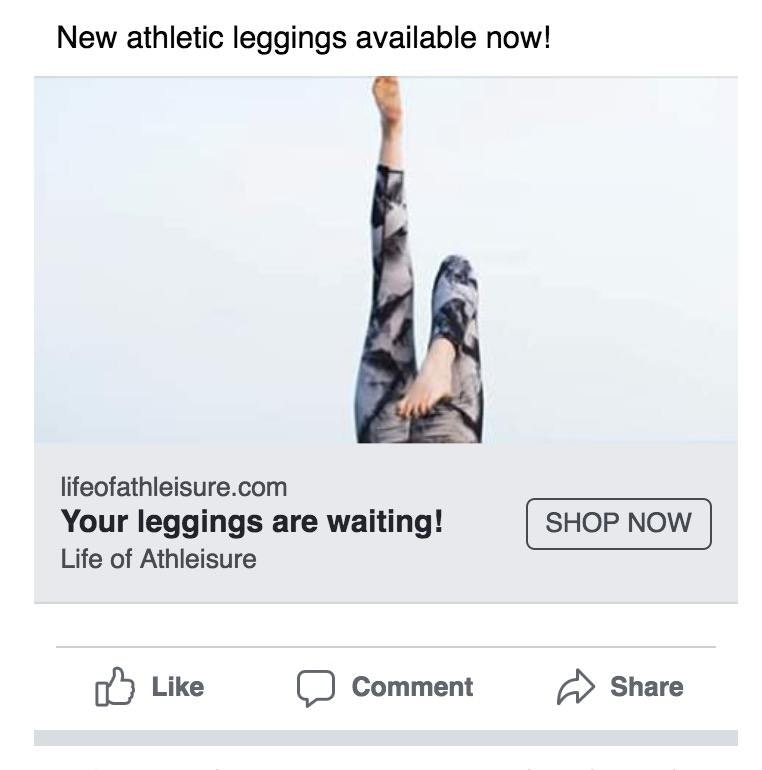
Launch your campaigns, and see which one performs best – that one will be the subject of your next test.
From there, you can test the product with different audiences, or simply relaunch your prior campaign to the segment of your audience which performed best.
If, for example, you noticed that mostly women clicked on your ad, reassign your budget to them.
Maybe you saw that people aged 18-30 engaged with your ad most, so you can assign more budget to that audience.
Or maybe you strike gold with your first ads – if this happens, just keep it going!
Let’s take a look at the analytics example below:
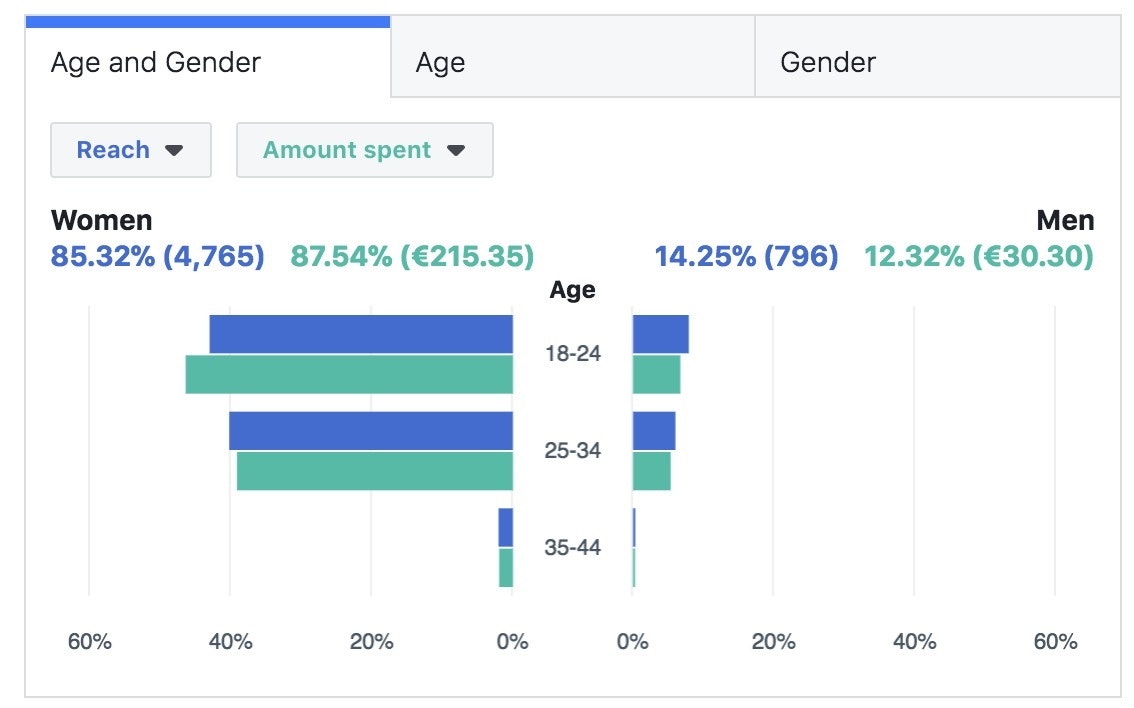
It’s clear that women were engaging much more with the ad, and it was tied fairly equally between the 18-24 and 25-34 age group. In this case the analytics show that it could be a good idea to just remove the ad budget for men, and just focus on targeting women instead.
No matter what the outcome is for your ads, you’ll gain a ton of valuable information that you simply wouldn’t have before you ran your first ad.
Trust is Essential
“Why should I trust you?”
That’s never a pleasant question to be asked, but it’s one which shoppers are constantly asking.
In fact, when it comes to ecommerce, there aren’t many things that are more important than trust.
So, ask yourself, why would somebody trust your business?
Especially if they’ve never heard of your brand new business and they’ve just landed on your website for the first time from an ad which you launched.
Is it the in-depth About Us page which you created that explains the core values of your brand and your mission statement?
Are you leveraging social proof and promoting your social media channels on your website?
Or is it your meticulously planned product pages which instill trust in your potential customers?
Whatever it is, make sure that it’s clearly visible.
It’s easy to do this if your store is built with Shopify. Just head to “Online Store” in your store admin, and then click on “Navigation.” From there, you can make sure that all of the most important details are available to anyone who stops by. In this example, anyone who stops by will see the “About Us” and “Contact” pages along the main store navigation bar, and then all the nitty-gritty details are available in the footer.

If you do manage to get potential customers onto your website with your marketing campaigns, you’ve already taken care of the hard work.
Don’t give those shoppers a reason to click off your website – always think about how you’re going to help your potential customers to trust your brand.
Remember, running an ecommerce business is totally different to running a brick and mortar store.
It’s not as easy giving a human face to your brand. You customers can’t touch your products or try them on before making a purchase.
That’s why it’s so important to give all of the relevant information to a customer on your website so that they can pull the trigger on your product without any worries.
Trust is something which is built over time, and it might even take multiple touch points with a customer before they decide to make a purchase from your store.
This is another reason why it can be tough to make sales from your very first ad.
Pricing Your Products is Tough

At the end of the day, you’re an entrepreneur – you want to make profit with every sale.
But coming up with prices for your products can be complicated.
When you’re coming up with a pricing plan for your products you need to factor in the original price of your product, shipping costs, and marketing fees, and come up with a price tag that you’re happy with.
And when it boils down to it, you’re probably going to be making an educated guess when it comes to choosing the final price tag, especially if you’re just getting started.
The thing is – you’re not really going to know if your prices are too expensive, too cheap, or just right until you’ve already got customers onto your website.
You simply don’t have the data to know that yet.
You’re not supposed to have it either.
Sure, you can do competitor research, and check how other businesses in your niche are pricing their products.
But you’ll only start to gain a real understanding about how accurate your pricing is after you’ve been running ads and marketing campaigns for a little while.
And honestly, it could be your prices which turn your potential customers away.
That’s totally fine though – if you recognize that your pricing could be a problem, then you can act upon that.
The best way to check if your prices are right? Test, test, test.
Gain insights about how your audience react to different campaigns, how they behave on different product pages, and use them to guide your decisions on your pricing.
For example, you can see how people react if you use a 40% off! message in your ads versus a $25 discount code! message. You test that on Facebook the same way as you’d test the different images that we looked at earlier: Create an A/B test, launch two ads, and watch the data roll in.
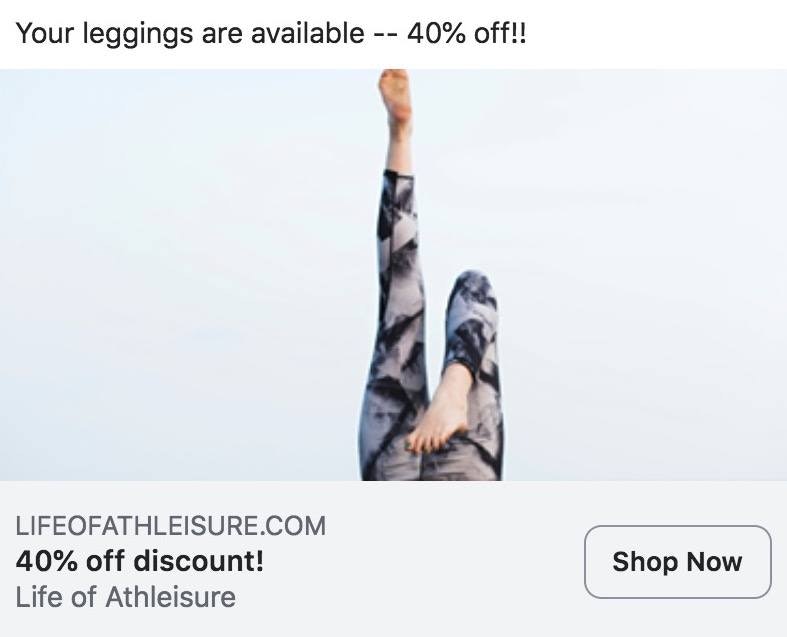
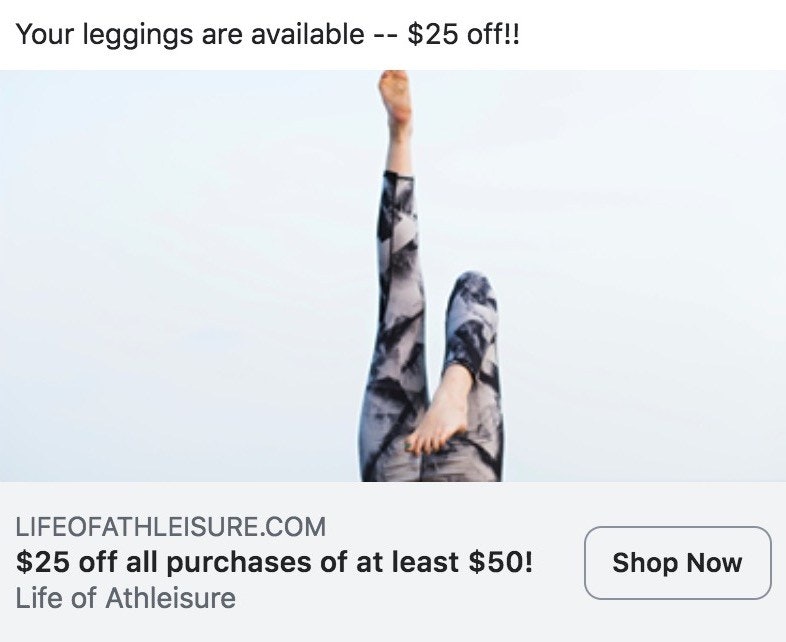
There’s a ton that you can learn – it’s all a case of gathering the data.
A Final Note
So, that’s it – that’s why you might not make a sale with your first ad.
And that’s exactly why it’s totally fine if you don’t.
Sure, every ad or marketing campaign that you launch might secure you some sales, but it will 100% give you insights.
You can’t pin a monetary value on insights. They’re priceless.
Insights are what will take you and your business to the next step, if you use them to your advantage.
All in all, I cannot stress how important it is that you try your best to learn from everything you do.
And try not to see money, time, or effort that goes into campaigns which don’t convert as “wasted.”
Instead, view it as essential research which you needed to do.
After all, you’re in this for the long-term, and Rome wasn’t built in a day.






